The
Mystique
of the Thacher Trans-Sierra
by Bo Manson
Please scroll down to begin
"I joined
or Thacher students, the term “trans-Sierra” conjures images of pre-dawn mornings, high mountain passes, Cliff Bars and instant oatmeal, and six days of mile after mile of rocky trail. Why, then, would a teenager volunteer for a week of physical hardship in the High Sierra? Why not opt for a mellower Extra-Day Trip: fly fishing on the Little Kern, paddling the coast of Santa Cruz Island, or hiking a thirty-mile loop of the Big Sur backcountry. Each September, however, since Thacher’s inaugural trans-Sierra trip in October, 1985, twelve to fifteen students have organized themselves into three camping groups, recruited faculty leaders, identified routes crossing the Sierra, reviewed the relevant topo maps, organized their camping gear, packed their bear canisters, and set off in rented SUV’s eager to embrace the physical and mental challenges that they know await them. The mystique of the Thacher trans-Sierra—its ability to lure students year after year into a week of hardship in the high country—endures because of, rather than in spite of, these trials. As one recent trans-Sierra veteran said, “I joined because I wanted a bigger challenge. Thacher students really like to challenge themselves and a trans-Sierra is a really good way to do it.”

because
I wanted
a
bigger
challenge"
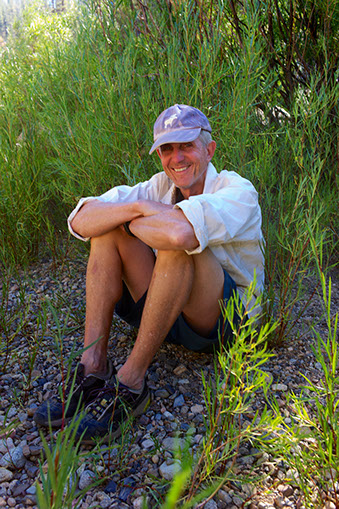
After completing a particularly difficult trip across the Sierra in the fall of 2013, I had decided that my fifty-seven-years-old legs had endured their last long hike across the mountains. Then, however, in May, just a couple of days before the end of the school year, Peter, a bright-eyed freshman, approached me on his way out of our English final exam. As he dropped his test on the rising stack on my desk, he said, “Mr. Manson, I want to captain a trans-Sierra. Would you agree to be my trip’s faculty leader?” There we were, teacher and student, both just hours away from the freedom of summer vacation, and this enthusiastic young man was looking beyond summer’s lazy days toward the mental and physical tests awaiting him on a High Sierra trail. How could I resist his eager determination? And so, this past September, I joined Peter and four other intrepid boys for their first, and my ninth, hike across the Sierra. The team Peter assembled for his EDT matched their captain’s anticipation for the adventure ahead.
The author at rest.
Meet the Group
Our departure from campus on Labor Day Monday contained that edge of disorientation that accompanies the annual end-of-summer transition from home to school mixed with the anticipation of the adventure awaiting us. Even though we had exchanged pre-trip emails during the summer, we had gathered as a group for the first time just the day before. Now, having piled into Thacher’s Suburban 109 with our heavy packs and high spirits, we drove through the school gates confident that we had—as the School’s camping motto advises—“prepared for the worst while hoping for the best.”
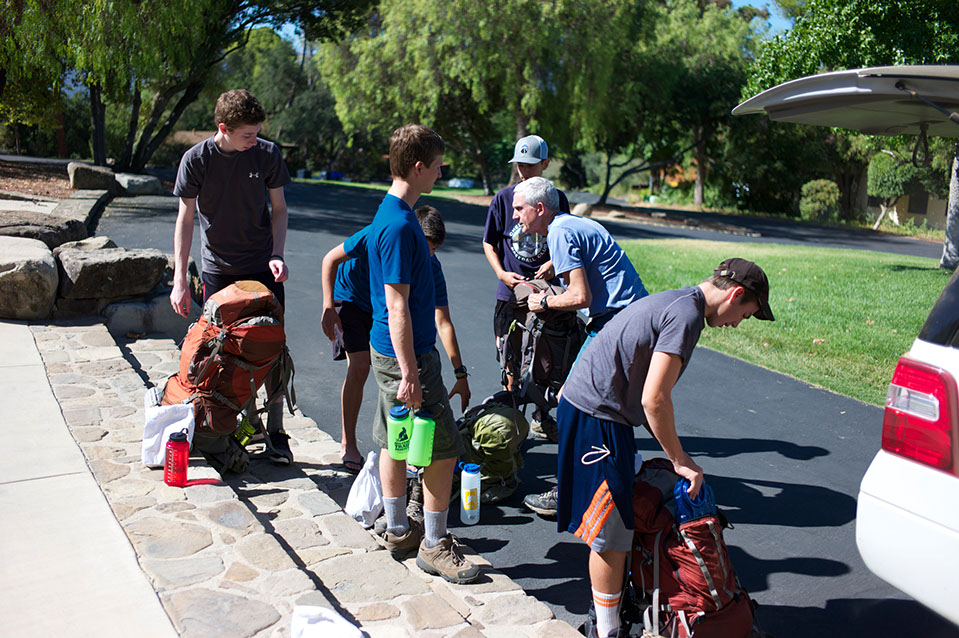
"We had
prepared for the worst
while hoping for the best."
Much of the chatter in the car on our drive across the Mojave desert revolved around mileage and altitude and uphill climbs. How far were we really hiking? 50…60 miles? How high would we be? 12,000…13,000 feet? Certainly we were excited about the trip. The boys’ questions, on the other hand, reflected an uneasiness that they kept in check but couldn’t completely dismiss. As we rounded the southern end of the Sierra and headed north up 395, we confronted for the first time the physical presence of the mountains. The Sierra’s eastern escarpment juts abruptly, in places near vertically, from the Owens Valley floor. The continuous crest of the range defines the landscape, creates the local weather, and dominates the imagination. In Lone Pine, we turned west on Whitney Portal Road, our conversation muted by the 6,000 rise of granite facing us. As our Suburban climbed the switchbacks of Horseshoe Meadow Road, we cut the air conditioning, opened the windows, and breathed in the mountain sage, pine and dust.
That night, camping at the trailhead at 10,200 feet, we took advantage of the evening hours to adjust to the altitude and to enjoy our only campfire for the week. In response to California’s historic drought, Inyo National Forest and Sequoia National Park had banned all fires. We gathered around the fire that first evening knowing that our nights crossing the mountains would be colder and darker. Sitting on their bear canisters, feet propped against the blackened rock of the fire ring, the boys told summer stories. Their laughter mixed with the crack and pop of the log fire. Gradually their attention turned again to the trip. “How early should we wake up?” “How many miles will we hike tomorrow?” “How high is our first pass?” Gradually the fire and their questions died down, and we settled into our sleeping bags. The vast swath of the Milky Way arched overhead. We curled into our bags anxious for sleep and for the adventure ahead.
With fifteen or more miles to hike each day, you don’t muck about in the morning. Sleeping in until daylight or preparing a hot breakfast become luxuries you avoid in order to get moving. Following our night at the trailhead to acclimate, I woke the kids at 5:45 am. They clambered out of their sleeping bags into a crisp 25 degree mountain morning. Our headlamps sliced the darkness, illuminating silent swirls of dust rising from our boots as we stuffed our bags, hoisted our backpacks, and headed west toward Trail Pass, a 1,200 feet climb from Horseshoe Meadow. Walking through the dim light of dawn, the ridge above the pass etched in gold, we were committing ourselves to an endeavor that we didn’t—and wouldn’t—fully appreciate until we had actually experienced it.
"Sleeping in...
...a hot breakfast
become
luxuries
you avoid"
Three hours later, we topped the pass and dropped our packs at the junction with the Pacific Crest Trail. Within just a few hours, we had survived our first sub-freezing morning and conquered our first mountain pass. Already we were chipping away at our underlying uneasiness. We felt good, confident, even cocky. Under a brilliantly blue, cloudless sky, standing atop an 11,000 ft. pass, the Sierra backcountry opening out before us to the west, we were Nick Carroway contemplating “the fresh, green breast of the new world.” This was our personal Westward move. This was Manifest Destiny. We would succeed. We would prevail. We toasted our accomplishments—both recent and still to come—with iodine-laced water and granola bars.
Two years earlier, my trans-Sierra group had sprawled out at that same junction, on the same cold granite rocks, and experienced similar feelings of pride mixed with a dash of relief having ascended their first mountain pass. On that September morning, I had noticed a pair of hikers advancing up from the west side of the pass. They were making slow but steady progress. They carried good-size packs, and each walked with two metal hiking poles. The rhythmic tapping of their poles on granite preceded them up the slope. As they drew closer, we were surprised by their age. They appeared to be in their mid-seventies, well into their retirement years. Since they were headed east toward the trailhead and since it was the Monday of a long weekend, I figured they were completing a three-day trip, heading over the pass and back down to the trailhead. Once they reached us, I asked them if, in fact, they were “headed out.”
“No, we’re going on up to Mt. Whitney,” the husband replied.
“Sounds like a great trip,” I said, while thinking: Wow, that’s pretty ambitious for a couple of old folks.
“Are you just getting started” he asked.
“Yes,” I said, “We’ve just hiked up from the Cottonwood Trailhead this morning.”
As we chatted, his wife looked from the five students to me. “Are you all one family?” she asked tentatively.
The students laughed and I chuckled, “No, we’re a high school group. We start each year with a camping trip.”
“That’s fantastic! What a wonderful school. Where are you headed?”
“We’re actually also heading north as far as Crabtree Meadows, and then we’ll bushwhack west down to the Kern. We plan to hike out on the west side at the end of the week.”
“Congratulations,” they both exclaimed. “You kids will be really proud when you complete that trip.”
Feeling both pleased and reassured by their enthusiastic praise, one student decided to reciprocate with our group’s support for their trip. “So, where did you get started?” he asked.
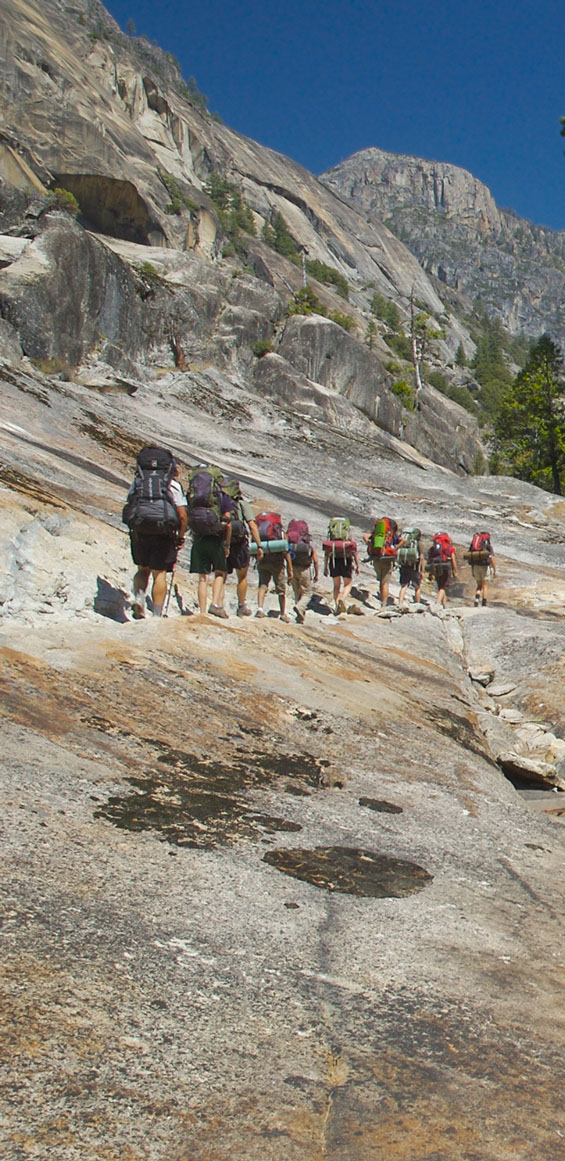
The husband and wife glanced briefly at each other, and then she turned to us and said, “Well, we started this trip on the Mexican Border.”
“When we reach Whitney,” the husband added, “we’ll have completed about 800 miles of the Pacific Crest Trail.”
So much for first impressions! Suddenly the support that this couple had so generously offered us took on the weight of true experience. Here were two expert hikers, citizens of the wilderness, welcoming us into their high altitude world and encouraging us onward toward our own goals. Grinning with new confidence, we had hoisted our packs and marched off the pass eager to embrace whatever lay ahead.
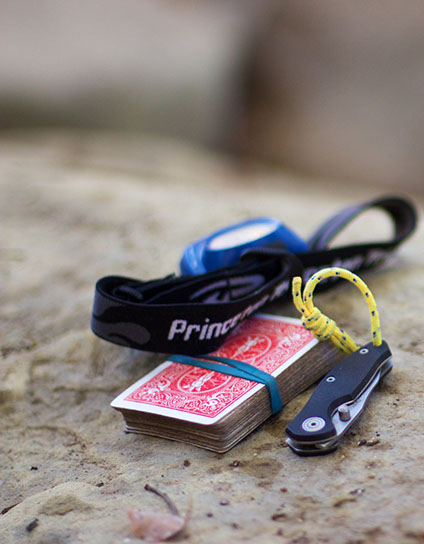
Last September, we headed down that same trail paralleling Mulkey Creek as it winds west down to the flats of Bullfrog Meadow. We had shed our morning fleece. We felt light, agile, ready for the miles ahead. Over the next five days we would adhere to a familiar daily pattern: up early, on the trail in the cool of the morning, hike for eight to ten hours, snacks on the trail, establish camp, wash away the trail dusty with a dip in the Kern, cook dinner, share a few hands of Hearts, and head to bed early to be back up at first light the next day.
Four days and fifty-some miles west, we stopped for a late lunch by Little Kern Lake, a pocket of snow melt four hundred feet above the Kern River. The trail climbs out of the river valley and navigates a narrow rocky gap before skirting the lake’s eastern edge. We stretched out on boulders above the water for peanut butter and honey bagels. Following lunch we would descend the Devil’s Staircase, a steep jumble of loose rock rutted by pack animals and winter storms.
Fifteen minutes from Little Kern Lake, we reached the top of the Staircase and headed down. The boys immediately quickened their pace. They reacted to the descent like skiers attacking a mogul run. Hopping from rock to rock, sliding through scree, they disappeared around the second switchback, their laughter and dust rising back up the slope. Twenty minutes later, we reconnected at the base of the descent. The boys were sprawled under a sycamore tree. Their smiles greeted me as I stepped off the last boulder and onto the sand of Grasshopper Flats. We were thirsty and tired, worn thin by four days of hiking, but pleased to be back on the banks of the Kern. It was late afternoon on our last full day on the trail. Resting under the sycamore’s broad canopy, I thought back to an equally hot, dry afternoon on Grasshopper Flats.
Three years earlier, the flats had been scarred by the spring runoff. High water had ripped down Rattlesnake Creek, washing away the trail and several feet of topsoil. Tree trunks littered the forest floor, some stacked half a dozen high. We had dropped our packs in a washout that served as our trail. I was pondering the map, wondering how far the flood damage might extend and how long it would take to reach the campsite I’d been told about at Leggett Creek. The students sat in the shade of a small stand of lodgepole pines. Up the creek bed came two riders, each one leading a pack horse. The rough-looking packer in front could have ridden out of the 19th Century as easily as the 21st: worn boots, dusty blue jeans, ragged work shirt, and sweat-stained cowboy hat. The middle-aged woman with him turned out to be his daughter. When he reached us, the packer pulled up his mare and focused his one good eye on me. His other eye wandered up and left as if it were studying the ridgeline to the west for signs of imminent danger.
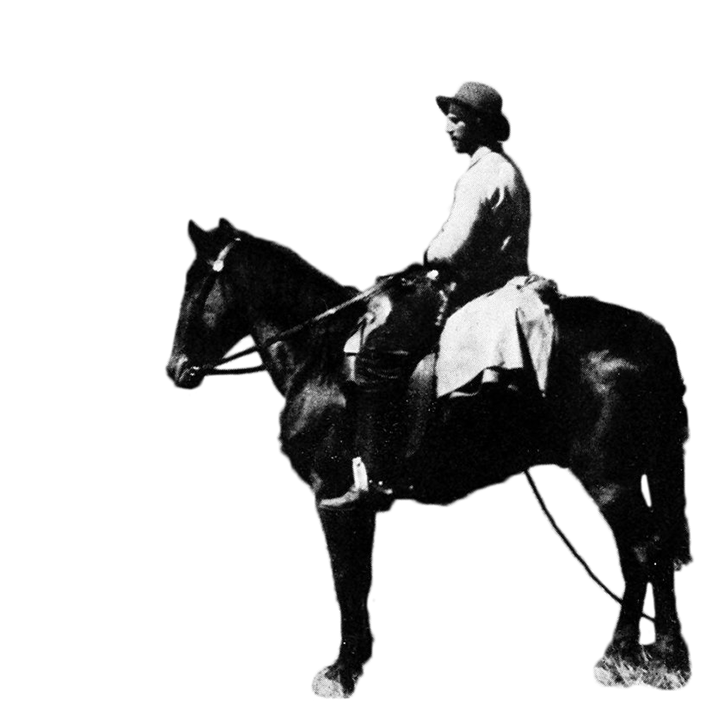
“Have you ever been here before?” he asked.
“No. No, I haven’t.”
“Well, it’s hard to believe how much the valley has changed. I’ve been coming in here for twenty years, and I’ve never seen the flooding this bad. Where you headed?”
“We’re hiking over to the Little Kern River tomorrow,” I said, “and then out at Jerky Meadow.”
His daughter, who had been studying us, spoke up. “Are you all a family?” she asked.
And so we once again launched into the familiar explanation: The Thacher School, Extra-Day Trips, start of the school year.
“So, where you coming from?” asked the packer.
“Well, we started over on the east side near Golden Trout.”
The packer rocked back in his saddle, surveyed our group one at a time. “Well, I’ll be,” he said. “That there is a trans-Sierra. You kids should be mighty proud.” Then he paused for a moment before adding, “You’ll go back to your school, and your friends won’t ever understand what you’ve done. There’re not many people these days who have done such a thing. Congratulations.”
And then he whistled softly, tapped his boot heels to the soft belly sides of his mare, and he and his daughter moved on up the creek bed.
Looking back, I’m struck by the parallels connecting these two chance encounters with camping’s tribal elders, first at the summit of Trail Pass and then on Grasshopper Flats. In both instances, the students and I were mistaken for a family and we were congratulated for challenging ourselves.
The packer then predicted that our friends would never fully understand or appreciate our accomplishments.
"In both instances,
the students and I
were mistaken for a
family"
We at Thacher are, in many ways, like a family. We clearly challenge ourselves, day in and day out, in a myriad of ways, and we do live our lives, both on campus and out in the backcountry, in a relative kind of anonymity. Yes, we celebrate success at school Assemblies and banquets, in reports and emails home, and with quiet pats on the back. Our accomplishments, however, remain—on some fundamental level—our own. As the packer reminded us, success is,
at its core, a personal, private experience, one fully understood only by ourselves. Maybe that is why, year after year, students sign on for the guaranteed challenge and private triumph of the trans-Sierra.
Sunrise in the Sierra is only one of the many compensations for the effort it takes to get here.
The final push up to Jerky from the Little Kern River stock bridge is steep and dusty. To avoid the worst of the afternoon heat, we lingered at the river, sharing its deep pools with each other and the occasional rainbow trout hiding in the shadows. After the sun settled behind the treeline to the west, we hoisted our packs for our final uphill climb. Tempered by four days of hiking, refreshed by our afternoon swim, and inspired by the thought that our vehicle waited just eight miles away, we tackled our last climb with renewed vigor. Well, at least the boys did. I, on the other hand, felt every step of those final miles and wondered if this would be my last trans-Sierra. The boys marched up the hill, laughing and singing as we climbed. They commented on the cool evening air, the long shadows and golden light. With each step, they celebrated youth’s enthusiasm for physical accomplishment. Each stride brought us closer to the trailhead, to the Suburban, and to a goal dimly imagined five days earlier.
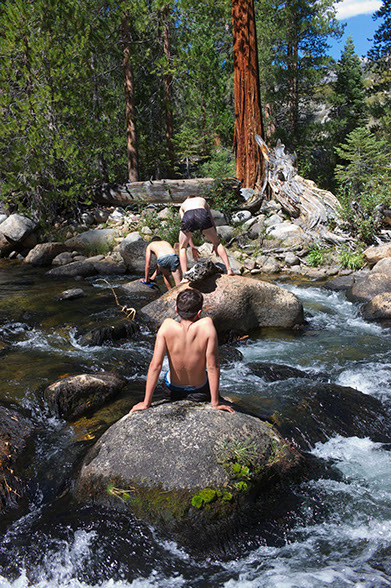
That evening we bivouacked above Jerky Meadows, just three miles from the Lloyd Meadows trailhead. We were sore and tired, but content. We ate the last of our energy bars for dinner, unrolled our pads by the trail and settled in for our final night under the stars. Stretched out in my sleeping bag, I listened to the boys banter and boast about the trip. They cataloged the difficult challenges, the best meals, the most hilarious moments, the most satisfying accomplishments. Even the relative emptiness of their stomachs couldn’t dampen their spirits. The final three miles were, as they proclaimed to the night, “All downhill from here!” Following an item-by-item review of the In-N-Out Burger menu in anticipation of our road meal the next day, two of the boys moved on to thoughts of their next trans-Sierra.
“This route was good but sort of short,” declared Peter Ammons.
“Yeah, we could have completed it in three days,” agreed our captain, Peter Schmidt.
“How about the John Muir Trail? Isn’t it a couple hundred miles long?”
“Sure, but we’d need more than an EDT.”
“How ‘bout we start a week before school starts.”
“We could meet in Yosemite and hike the first hundred or so on our own,” Schmidt’s voice rising.
“The faculty and other students could meet us with a food drop,” suggested Ammons.
“And we’d finish the rest of the trip with them!”
“Two weeks in the backcountry...perfect!”
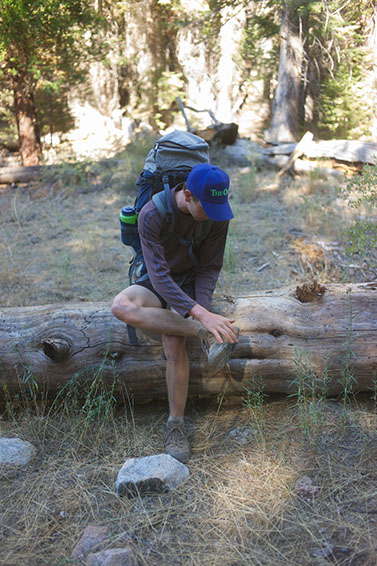
At 4 a.m., a gibbous moon rose over the Kern River Valley to the east illuminating our ridge. We woke to the excitement of our final descent. With only our pads and bags to pack, we were on the trail in ten minutes. To ensure we lost no one in the dark, I positioned myself at the rear. The dust from ten tramping boots ahead of me appeared like clouds billowing in the light of my headlamp as we descended the switchbacks to Lloyd Meadows. I broke into a trot to keep up with the boys. For 30 minutes we silently hurried down the ridge, isolated from the emerging dawn by the narrow beams of our headlamps.
One of boys in the lead was the first to spot a flash of chrome through the undergrowth. Soon the others noticed their lights reflecting off windshield glass. Within seconds, dirt gave way to pavement. The forest opened before us revealing the trailhead parking lot and our Suburban. We danced, cheered, hugged. Shouts and laughter mixed with the morning light. We had made it! I wondered would any of the boys experience this moment of celebration again. The two Peters were already planning their next trans-Sierra. For a couple of the boys, however, this would probably be their longest trip.
Questions for Trip Captain Peter Schmidt
click on the question to reveal the answer
Why did you want to captain a trip?
Captaining a trip was an appealing choice because it allowed me to have a more direct impact on the planning of the trip, and it also served as a great learning experience.
What did you anticipate would be rewarding about it?
I wanted to make the trip less of just another activity to sign up for and more of an organic experience that I felt engaged in from start to finish.
What parts of the experience did you particularly appreciate?
I enjoyed learning how to plan a trip and hone my camping skills. Before this, I had never obtained a hiking permit, planned a route, or designed a meal menu. These behind-the-scenes details go unnoticed for most students. The captain gets to take on the responsibilities of the mechanics required to make a trip successful.
What parts were less satisfying?
It's hard to think of a part I did not enjoy, but the route could have been longer. The trans-Sierra trips are generally much longer and more strenuous than most EDT's. The opportunity to both test and push one's limits sets them apart.
Any particular event or moment that stands out from the trip?
I really enjoyed our bivouac up on the ridge. We knew it was our last night as a group and so we all sort of pulled together. Gathering up on that ridge felt like a good way to celebrate the trip and to end it. We lay around playing cards and laughing, knowing we’d have to wake up in just a few hours to hike down to the van.
5
I located the Suburban’s key hidden on the shock spring of the front wheel and beeped the doors open. The boys loaded our packs and hopped in. The doors slammed shut. As I twisted the key in the Suburban’s ignition and the engine turned over, I asked myself, “Was this my final trans-Sierra?” My knees voted yes, but, if in a few months a student were to ask me to lead another one, I had to admit I’d be hard pressed to say no.
About the Author - Since 1988, Bo Manson has been introducing Thacher students to the High Sierra. He also teaches English and woodworking and coaches rock climbing.







